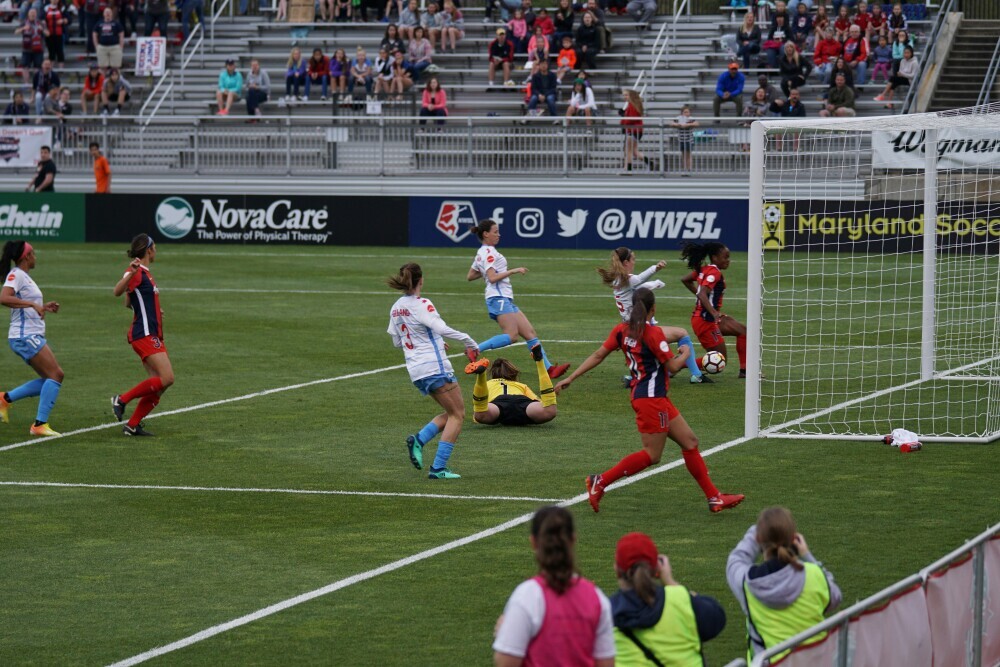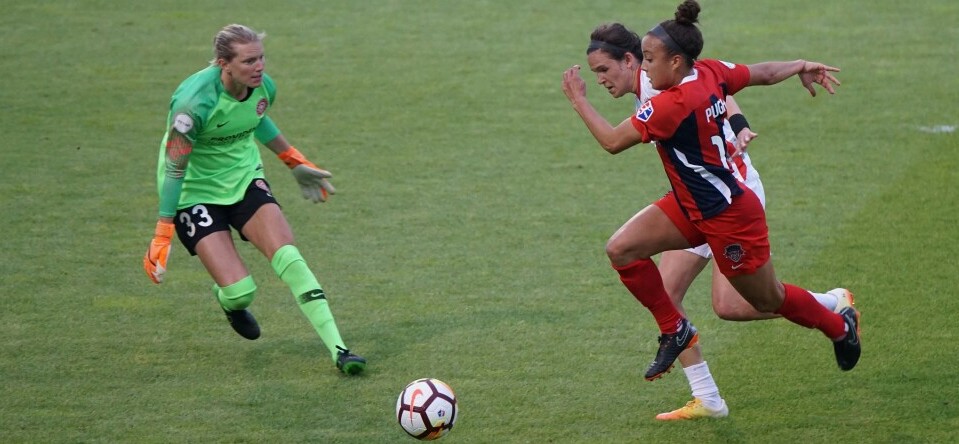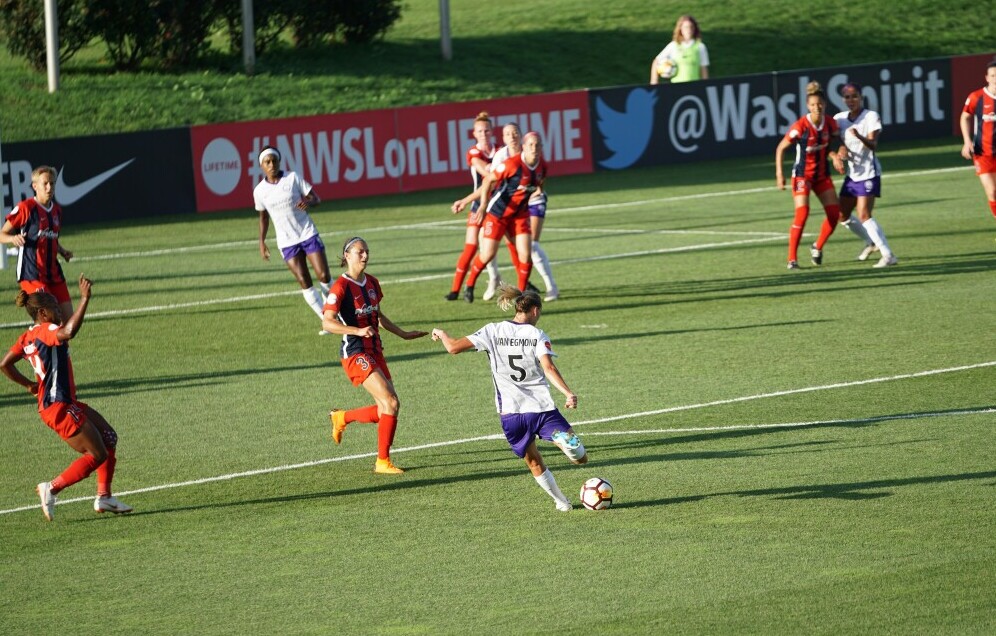Pressing is one of the most effective defensive strategies in modern soccer, and it can be even more powerful when implemented in response to specific situations or events.
Pressing triggers are particular moments during a match that prompt a team to initiate their pressing strategy, with the goal of winning back possession, disrupting the opposition’s build-up play, and creating scoring opportunities.
A well-timed and coordinated press can throw the opposition off balance, force mistakes, and allow the pressing team to quickly capitalize on the opponent’s disorganization.
Understanding pressing triggers is vital for players and coaches alike.
By recognizing these key moments and knowing how and when to press, a team can increase their chances of regaining the ball high up the pitch and put constant pressure on their opponents.
In this article, we’ll delve into the most common pressing triggers, the tactical considerations behind them, and how teams can use these triggers to enhance their defensive strategy.
What Are Pressing Triggers?
Pressing triggers are specific situations in a game that prompt a team to initiate their pressing game.
These triggers can happen anywhere on the pitch and involve various elements, such as when a player loses possession, an opponent makes a poor touch, or when a team plays a predictable or dangerous pass.
Teams use pressing triggers to disrupt the opponent’s build-up play and regain possession as quickly as possible.
When a pressing trigger is recognized, all players must be alert and ready to spring into action.
The pressing team’s reaction to a trigger is what makes the strategy effective. A good press can force turnovers, disrupt the opponent’s rhythm, and create immediate counter-attacking opportunities.
Conversely, failing to recognize or execute a pressing trigger correctly can lead to counter-attacks and leave gaps for the opponent to exploit.
Common Pressing Triggers
There are a variety of situations that can serve as pressing triggers. These are moments when the opponent is vulnerable, and the pressing team can apply immediate pressure to force a mistake or regain possession.
Below are some of the most common pressing triggers in soccer:
1. Ball Possession Loss
The most obvious pressing trigger occurs when a team loses possession of the ball. This is often referred to as the “first phase of pressing,” and it’s the trigger that starts the press.
As soon as a player loses the ball, teammates must quickly apply pressure to the ball carrier, closing down passing lanes and forcing them to make mistakes. By immediately reacting to the loss of possession, a team can prevent the opposition from gaining control and setting up their own attack.
Key Tips:
- Players must have the mindset to press as soon as possession is lost.
- The team needs to quickly close down the ball carrier and reduce their time and space.
- Quick decisions and immediate reactions are key to creating turnovers.
2. Poor First Touch
A poor first touch by an opponent is a golden opportunity for the pressing team. If a player mis controls the ball or takes a heavy touch, it creates an opening for the pressing team to intercept and regain possession. Pressing on a poor first touch requires anticipation and quick reactions, with players ready to pounce as soon as the opponent mishandles the ball.
Key Tips:
- Players must stay alert to the opponent’s ball control and be prepared to react.
- If an opponent takes a poor touch, be ready to challenge for the ball immediately.
- Anticipate the opponent’s next move and position yourself to intercept or press.
3. Slow Build-Up Play
When an opponent’s build-up play is slow and predictable, it presents an excellent opportunity for the pressing team to initiate a press.
Teams that build from the back often take their time to move the ball forward, and when they do, they are often vulnerable to a well-timed press.
If the opponent is taking too long to pass the ball, the pressing team can take advantage of the slow pace by applying intense pressure and forcing a mistake.
Key Tips:
- Players should press high up the pitch when the opponent is slow in possession.
- Timing is crucial; press when the ball is played into a dangerous or predictable area.
- The team should be compact, cutting off passing options and reducing the space for the opposition.
4. Long Balls
Long balls, whether played from deep or as an attempt to bypass the press, can often be intercepted if the pressing team anticipates the trajectory and timing of the pass.
When an opponent plays a long ball, the pressing team can quickly move into position to intercept it, forcing a turnover or limiting the effectiveness of the pass.
This is particularly effective when the long ball is poorly executed or overhit.
Key Tips:
- Players must anticipate the long ball and position themselves accordingly to intercept.
- The pressing team should ensure that the defensive line is compact, ready to cut out any passes into space.
- Teams should aim to win the second ball after an interception to launch a counter-attack.
5. Goal Kicks
Goal kicks are often seen as a routine moment in a match, but they can also serve as a pressing trigger.
A team can press the goalkeeper during a goal kick to disrupt the opposition’s build-up and prevent them from playing out from the back.
Pressing the goalkeeper can force a rushed clearance, resulting in a 50/50 ball or a turnover in a dangerous area of the field.
Key Tips:
- Press the goalkeeper immediately after the goal kick is taken.
- Disrupt the opposition’s setup by applying pressure before they can organize their play.
- Use the high press to force the ball into a contested area, such as a throw-in or corner.
6. Throw-Ins
Throw-ins, especially in dangerous areas or near the opposition’s half, can also be an opportunity for pressing.
By applying pressure on the thrower, the pressing team can force a rushed or inaccurate throw, leading to a turnover.
Throw-ins tend to be slower moments in the game, making them ideal for an aggressive press to win the ball back quickly.
Key Tips:
- Apply immediate pressure on the throw-in taker.
- Close down the space quickly, forcing a rushed or inaccurate throw.
- Take advantage of any potential mistakes by the thrower to regain possession.
Tactical Considerations for Pressing Triggers
The effectiveness of pressing triggers depends on how well the pressing team implements them. Several tactical considerations must be made to ensure the press is successful.
Timing
The timing of the press is crucial. If a press is applied too early, the opponent may easily bypass the pressure or play the ball around the pressing player.
If applied too late, the opponent may have enough time to organize and retain possession.
Effective pressing requires a finely-tuned sense of timing to catch the opposition off guard and maximize the chances of a successful turnover.
Intensity
Intensity is another key factor. While high-intensity pressing is often necessary to force errors, it can be physically demanding.
Teams must understand when to apply full intensity and when to ease off. Overcommitting to a press without proper support can leave a team vulnerable to counter-attacks.
Communication
Effective communication is essential for a coordinated press.
Players need to be in constant communication to ensure that they are closing down passing lanes, covering spaces, and supporting each other.
Without clear and concise communication, the press can break down, leaving gaps for the opposition to exploit.
Defensive Shape
Maintaining a compact defensive shape is essential during pressing. Players must close down space while staying organized, ensuring that they are in positions to either intercept the ball or challenge for it.
A disjointed or scattered defensive shape can create gaps for the opposition to exploit, rendering the press ineffective.
Recovery Runs
After initiating the press, players should make aggressive recovery runs to support the press and prevent counter-attacks. Quick recovery is essential to prevent the opposition from exploiting spaces left behind by the press.
Conclusion
Pressing triggers are an essential component of any effective defensive strategy. By identifying and exploiting these triggers, teams can disrupt the opposition’s play, regain possession quickly, and create scoring opportunities.
Whether it’s a ball loss, a poor touch, or a slow build-up play, understanding when to press and how to execute the press can significantly improve a team’s defensive effectiveness.
By focusing on timing, intensity, communication, and maintaining a compact defensive shape, teams can execute an organized, effective press.
However, the press should always be balanced with defensive stability to avoid leaving the team vulnerable to counter-attacks.
Lets keep the conversation about pressing triggers in soccer rolling. Please leave the message in the comment section below and I promise to get back to you.
Happy soccer season!!!!!!!!!!
Here’s a little transparency: Our website contains Amazon affiliate links. This means if you click and make a purchase, we may receive a small commission. Don’t worry, there’s no extra cost to you. It’s a simple way you can support our mission to bring you quality content.”




6 Responses
This is a fantastic deep dive into pressing triggers in soccer! The breakdown of common pressing triggers, from ball possession loss to goal kicks and throw-ins, really highlights the importance of recognizing key moments to apply pressure effectively. I appreciate the emphasis on tactical considerations like timing, intensity, communication, and defensive shape—pressing isn’t just about chasing the ball, but executing it in a structured and coordinated manner.
One key aspect that could be explored further is the role of individual player intelligence in pressing situations. Some of the best pressing teams, like Klopp’s Liverpool or Guardiola’s Manchester City, rely heavily on players making split-second decisions based on their positioning and reading of the game.
Great work on this article! Pressing is such a crucial element in modern soccer, and this post does a great job explaining how teams can use it to their advantage. Looking forward to more content like this! ⚽🔥
Hi andrejs,
Thank you for your thoughtful comment.
I’m glad you enjoyed the breakdown of pressing triggers and the tactical nuances involved. You make a great point—pressing isn’t just about structure and timing, but also about individual player intelligence and decision-making.
Top pressing teams like Liverpool and Manchester City don’t just rely on pre-set triggers; they empower players to read the game in real-time, anticipate passing lanes, and react instinctively to opposition movement.
A well-drilled system provides the framework, but players’ ability to interpret situations on the fly makes pressing truly effective.
I’d love to explore this aspect further in future posts—perhaps an analysis of how different roles (forwards, midfielders, and defenders) contribute to pressing success or how teams develop “pressing IQ” in training.
What are your thoughts on the best ways to improve individual pressing intelligence in players?
Looking forward to hearing your insights.
Thanks again for the great discussion.
Best,
Raymond
Hey thank you for this informative post!
It interesting to see the various tactics used in sports, from the outside or audience who aren’t familiar with these sports, it seems like all games but its much more than that involving planning too!
We call it football in England so thought soccer was a whole other game till recently.
Thanks again and have a great day!
Hi Sariya,
Thank you for your comment.
I’m really glad you found the post informative. You’re absolutely right—there’s so much more to the game than what meets the eye.
The tactical planning, especially with pressing triggers, can make a huge difference in how teams play and compete at the highest level.
And yes, the football vs. soccer debate is always an interesting one!
No matter what we call it, the passion for the sport remains the same. I follow EPL with a passion. Although the team I support is not doing so great (Man United).
Hope you have a great day too, and thanks again for reading!
Best,
Raymond
Pressing in soccer isn’t just a defensive tactic it’s a strategic art that turns moments of vulnerability into opportunities to seize control. When a team quickly responds to a lost ball, a poor touch, or a slow build-up, they disrupt the oppositions flow and create chances to counter-attack. This tactical approach requires perfect timing, intense coordination, and constant communication, ensuring that every player is ready to close down space and force errors. In essence, recognizing these pressing triggers transforms a well-executed press into a game-changing tool, challenging teams to balance aggression with defensive stability. How do you think mastering these subtle triggers could change the way we view modern soccer defense?
Hi Dan,
Thank you for your insightful comment.
You’ve perfectly captured the essence of pressing as both a defensive and offensive tool.
Recognizing and mastering pressing triggers can fundamentally reshape how we view modern soccer defense.
Instead of seeing defending as just preventing goals, it becomes a proactive strategy—one that disrupts opposition rhythm, forces mistakes, and even creates scoring opportunities.
Teams that execute pressing with precision, like Liverpool or Manchester City, show how structured pressure can dictate the tempo of a game.
When players develop the awareness to recognize these subtle triggers instinctively, defensive play becomes more about anticipation rather than reaction.
It’s fascinating to see how pressing has evolved and continues to influence tactics at every level.
Do you think there’s a risk of over-reliance on pressing, or do you see it as an essential part of the modern game?
Looking forward to your thoughts!!!!
Best,
Raymond